ECOLOGICAL RESTORATION FOR ECOLOGICAL AND HUMAN HEALTH
Sierra de Guadarrama National Park (Spain) © Zerrin Karaarslan
Every year, the Alfred Toepfer Natural Heritage Scholarships (ATS) supports the work of young conservationist in protected areas across Europe. Zerrin Karaarslan is one of the winners of the ATS 2017 and is a Landscape Architect working for Ministry of Forestry and Water Affairs General Directorate of Nature Conservation and National Parks, Turkey. She is also Ph.D. Candidate in Ankara University Graduate School of Natural and Applied Sciences. As a technical staff working for the ministry, she will offer her gained experience to the restoration of degraded ecosystems in Turkey and enable the conservation of one of the richest biodiversity value of the region.
Registrations are now open! Open Call for 2019
The call is open to all young professionals working in topics related to Protected Areas in Europe. Conditions to apply:
- candidates must be under 35
- have a European nationality
- be employed by a Protected Area or nature conservation organisation
Applications for study visits to prepare master or doctoral thesis will not be considered.
The deadline is the 3rd of May 2019.
Find more information and REGISTER HERE!
Article issued by Zerrin KARAARSLAN
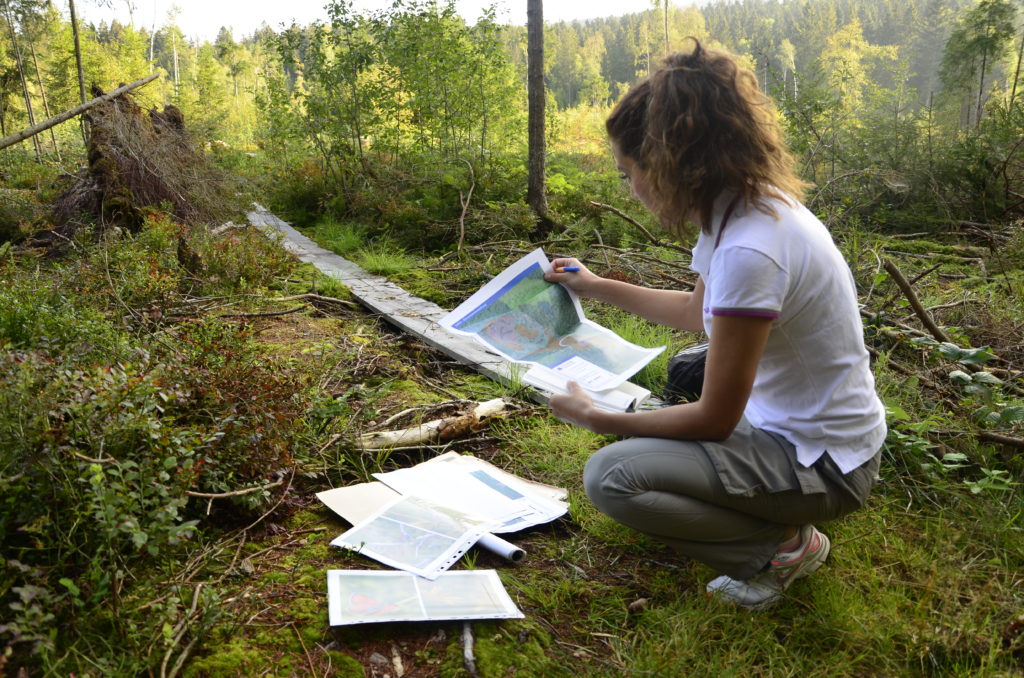
Current researches highlight a two-way relationship between restoration and health concept.
Firstly, “restoration enables recovery of a healthy eco-system through ecosystem management”.
Secondly, there are also very close linkages between human health and ecological health.
Thus, “a healthy ecosystem is one that provides the ecosystem services supportive of the human communities’ health” and wellbeing
In this context the purposes of study visits were;
- To see the best practices of ecological restoration in a protected area and understand the philosophy of the ecological restoration approach at European protected areas
- To learn and evaluate the benefits of ecological restoration on protected areas as a means of ecosystem health and human health,
- To offer gained experience as an intention for the restoration of degraded ecosystems in Turkey.
For evaluating effects of restoration on different ecosystems study visits were conducted at selected protected areas;
- Doñana National Park (Spain) – for wetland restoration,
- Sierra de Guadarrama National Park (Spain) – for scrub and natural grassland formation habitats restoration
- Bayerischer Wald National Park (Germany) – for recovery of the natural forest ecosystem through assisted natural regeneration.
As a means of an ecosystem, health key indicators (like the composition of flora and fauna; species diversity, biomass; primary production; the proportion of exotic species etc.) for different kinds of ecosystems are specified.
Effects of restoration on these indicators are specified according to the face to face meeting and field studies with national park managers during a week-long study visits at each NP.
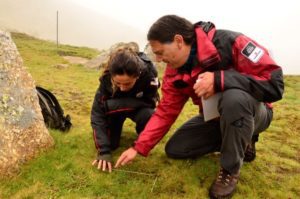
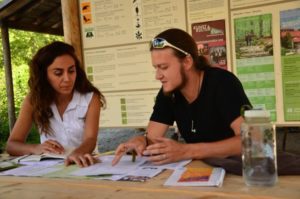
Field studies with national park experts at Bayerischer Wald National Park (Germany) and Sierra de Guadarrama National Park (Spain) © Zerrin Karaarslan
Also questionnaires were applied with the visitor for specifying effects of restoration on human health.
Visitor questionnaires were configured to evaluate the effects of protected areas social, psychological and physical health and welfare.
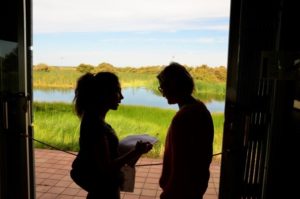
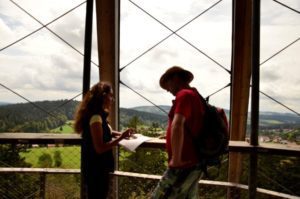
Questionnaires with visitors at Doñana National Park (Spain) and Bayerischer Wald National Park (Germany) © Zerrin Karaarslan
Main findings of the study;
Indicators for ecosystem health change according to ecosystem types. Thus restoration efforts in protected areas have different effects on ecosystem health at different ecosystem types. However, a common point for all ecosystem types is that ecosystem health in protected areas gets better with restoration efforts.
For example, endangered species returned to nest in NP Doñana National Park with wetland restoration efforts. Also, the number of alien species decreased while vegetation cover in NP increased thanks to restoration efforts.
Nardus stricta cover around the lake boosted, natural grassland natural regeneration improved and vegetation cover increased, erosion and eutrophication reduced, number of amphibians improved in Sierra de Guadarrama National Park thanks to scrub and natural grassland formation habitats restoration.
Development of regeneration density of trees and height composition in the forest regeneration increased in Bayerischer Wald National Park by “let nature be nature” approach. Also, the distribution of regeneration density in sample plots developed and biodiversity increased. Moreover drinking water quality and the amount of water in catchment also increased.
There are also plenty of healthy opportunities for visitors in restored protected areas like trails, cycling routes, visitor centers, observation points for fauna and flora. Visitors get the highest protected area experience at these recreational areas. Lastly, the evaluation of visitor surveys consistently documented positive links between human contact with nature and health and well-being. Hence by changing percentage from area to area a big part of visitors are totally agree that restored protected areas have high effects on their psychological, social, physical health and welfare.
Conclusion
The aim of the study visits was bringing together ecosystem health and human health within the scope of the ecological restoration effort in protected areas.
One of the main findings of this study is an ecological restoration in protected areas enables recovery of a healthy eco-system through ecosystem management.
This study also shows an increasing understanding of the positive relationships between protected area visitation and the associated health and well-being benefits to the visitors.
Consequently, ecological restoration approach in protected areas is a useful tool for the sustainability of ecosystem and human health and it should be supported by protected area managers.
You can find the entire survey here.
References
Beudert, B., Bässler, C., Thorn, S., Noss, R., Schröder, B., Dieffenbach-Fries H., Foullois N., Müller J. 2015. Bark beetles increase biodiversity while maintaining drinking water quality. Conservation Letters
Granados I., Toro M., Romero A. R., 2006, Laguna Grande de Penalara 10 anos de seguimiento limnologica. Cenro de Inverstigacion y Gestion Puento del Perdon. Parque Natural de Penelara. Spain.
Granados I.,Blanch L.N., Casado S.F., Moreno J.L.I, Sanchez F.H., Juez J.A.V. 2014. Penalara, L Montana Recuperada en. el. Parque Nacional de la Sierra de Guadarrama, Restauracion ecologica de una estacion de esqui alpino. Servicio de Gestión de Espacios Protegidos. Dirección General del Medio Ambiente Consejería de Medio Ambiente y Ordenación del Territorio Comunidad de Madrid, Spain.
Heurich, M. 2009, Progress of forest regeneration after a large-scale Iyps typographus outbreak in the subalpine Picea abies forests of the Bavarian Forest National Park. Silva Gabreta. 15(1). 49-66.
Kajala, L., Almik, A., Dahl, R., Dikšaitė, L, Erkkonen, J., Fredman, P., Jensen, F. Søndergaard, Karoles, K., Sievänen, T., Skov-Petersen, H., Vistad, O. I. and Wallsten, P. 2007. Visitor monitoring in nature areas – a manual based on experiences from the Nordic and Baltic countries.
Maller J. C., Townsend M., Leger St. Wilson C. H., 2008, Healthy parks healthy people: The health benefits of contact with nature in a park context. https://www.researchgate.net/publication/228644595_Healthy_parks_healthy_people_The_health_benefits_of_contact_with_nature_in_a_park_context
Romagosa F., Eagles P.FJ., Lemieux C., 2015. From the inside out to the outside in: Exploring the role of parks and protected areas as providers of human health and well-being. Journal of Outdoor Recreation and Tourism (2015)70–77.
Townsend,M., Weerasuriya,R., 2010. Beyond Blueto Green: The benefits of contact with nature for mental health and well-being. Melbourne, Australia: Beyond Blue Limited.